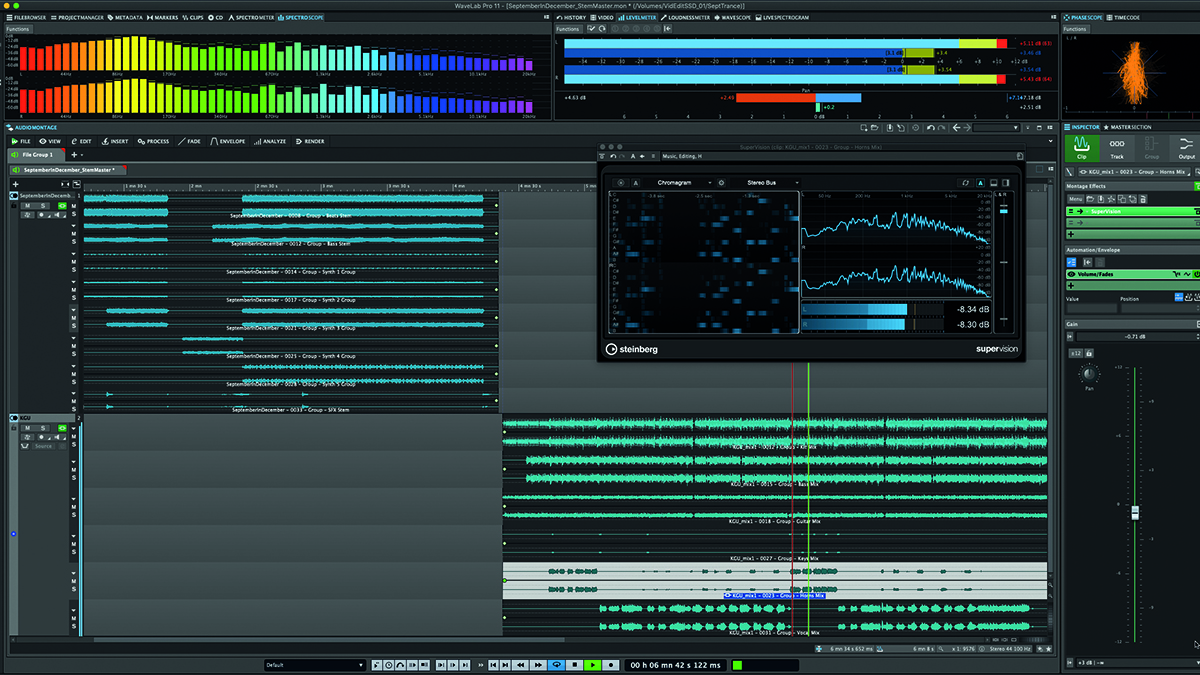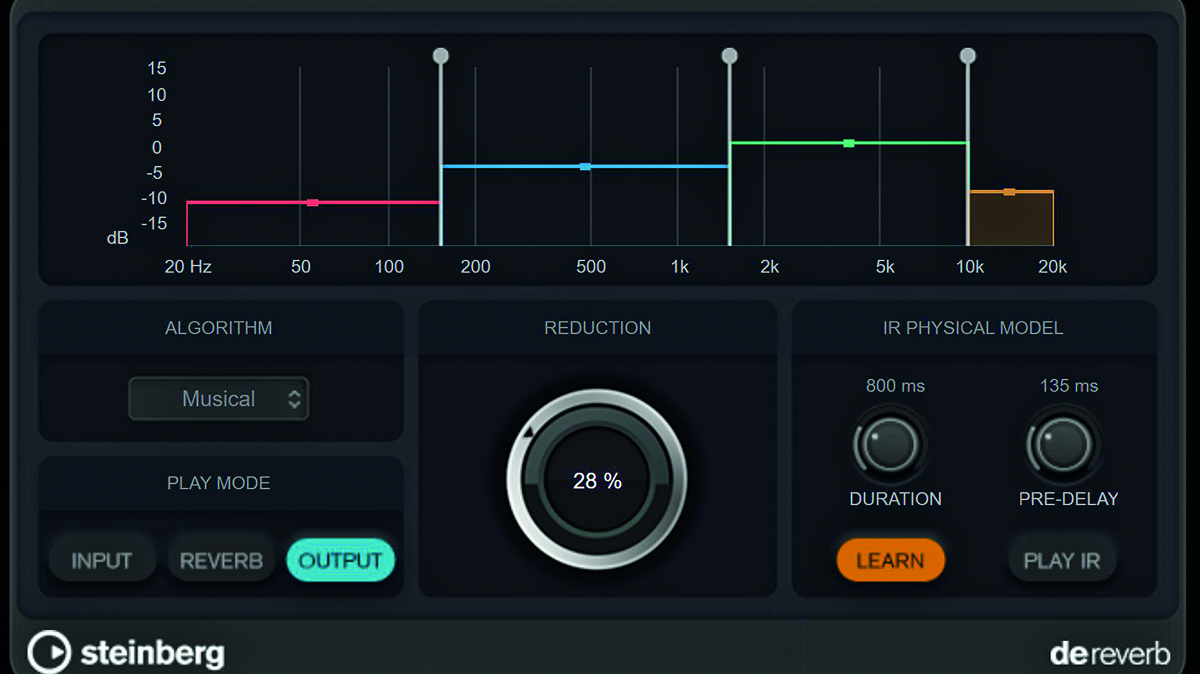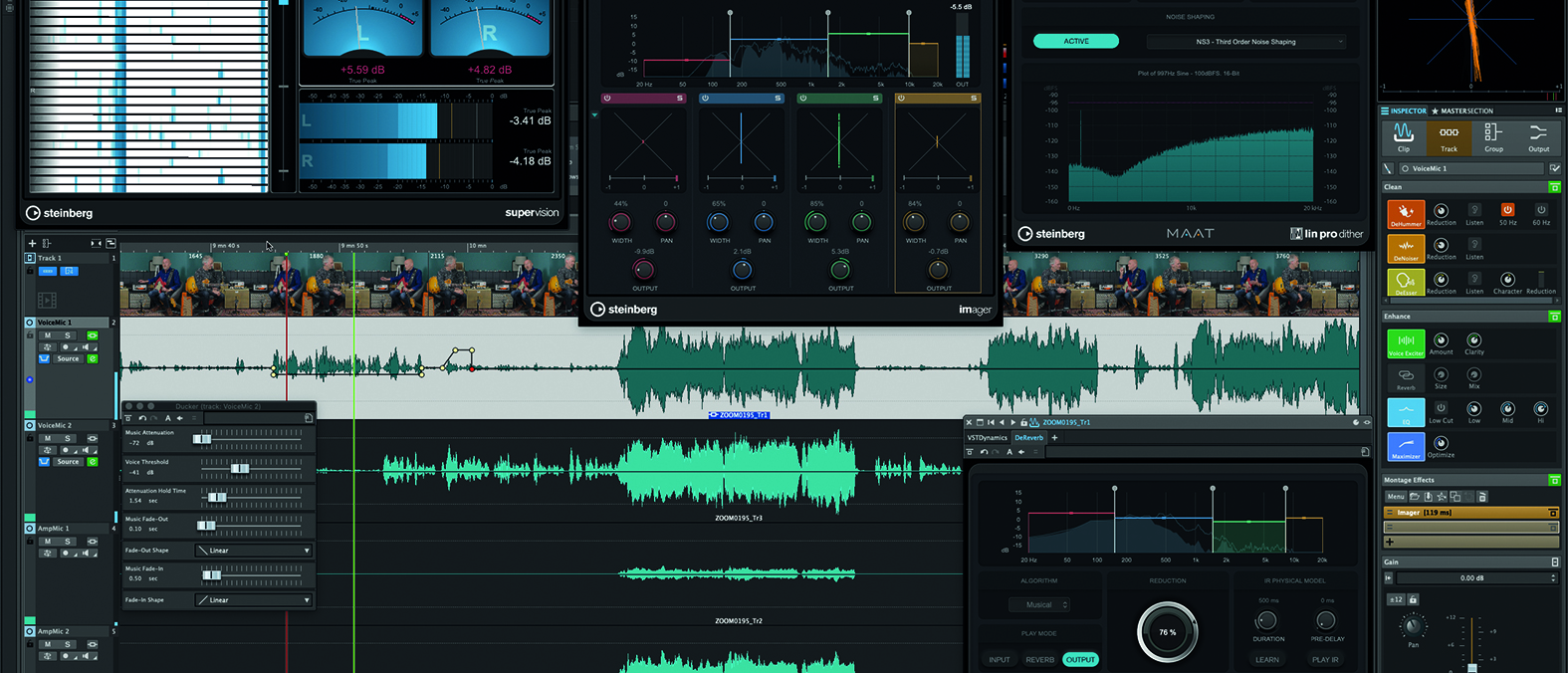MusicRadar Verdict
Significant enhancements and new features make for a satisfying update to Steinberg’s venerable audio editing, mastering and restoration platform.
Pros
- +
Track Groups provide new processing options.
- +
Track Lanes make stem mastering easier.
- +
Clip envelopes allow for plugin parameter automation.
Cons
- -
Clip envelope curves need bezier controls.
MusicRadar's got your back
Steinberg WaveLab Pro 11: What is it?
Steinberg’s first serious foray into the world of audio came with 1995’s inaugural release of WaveLab. Largely the work of a single developer, Phillipe Goutier, what started life as a simple audio recording and editing package has evolved into a highly capable workstation geared towards sample editing, audio mastering and sound restoration. To this end, the program is packed with pro-grade processors, meters and features, all of which have received a significant boost with the release of WaveLab 11.
As previously, this new version comes in both a cut-down Elements edition and a fully-featured Pro edition, (reviewed here). Both editions feature a new podcast publishing assistant, and this is at the heart of a new super-affordable Cast edition, ideal for Podcasters/YouTubers.
Steinberg WaveLab Pro 11: Performance and verdict
The most significant changes in WaveLab Pro 11 are centred around montages. For those who don’t know, a ‘montage’ in WaveLab is a multitrack timeline on which multiple audio files and clips can be arranged and processed.
The most significant changes in WaveLab Pro 11 are centred around montages
Plugins can be applied to individual files and clips at the track level, and at the montage output, allowing for detailed multi-stage processing chains to be created. There is now a new link in that processing chain in the form of Track Groups, essentially subgroups through which tracks within a montage can be routed, processed and mixed.
Additionally, tracks now have two new built-in processing sections that precede their plugin processing stage: The Clean section provides a DeHummer, DeNoiser and DeEsser; the Enhance section provides a Voice Exciter, Reverb, 3-band EQ and a Maximizer. These processors are basic examples of their ilk, but they’re quick‘n’easy to use, and having them included on, and optimised for, all tracks is undoubtedly useful.
Tracks also now have a built-in ducking tool, used to reduce the level of a track in response to the audio on other tracks. The tool is similar to a compressor in operation, reducing a track’s gain when the key level exceeds a threshold, but provides more detailed control than would a compressor. It’s also quick and easy to configure – just enable it on the track, specify the ducking source, and tweak the controls as needed.

• Audacity
This cross-platform audio editor/multitrack recorder is remarkably good for a free program.
• iZotope RX8 Advanced
Used widely in TV, film and broadcast, there’s little this post-production powerhouse can’t do.
Clips have been enhanced too, with a shiny-new Clip Envelopes feature. These allow you to create automation curves to control a clip’s volume, pan and plugin parameters, and work in a familiar node-to-node style. On the downside, there is no way to directly control the curvature of the lines between envelope nodes. There is a smoothing option, but this averages-out the entire clip envelope. As a result you need to add many awkward-to-edit intermediary nodes to guide the smoothing process.
Also, the actual values specified by the nodes may never actually be used, because the averaging often pulls the smoothed curve away from those nodes. A bezier curve system, as found in Cubase and Nuendo, would be far easier to work with. All of that said, we like that clip parameter automation is now possible, and look forward to it being improved in future updates.
Montages now fully utilise multi-core CPUs, leading to a very noticeable performance boost, particularly when moving between clips that have plugins applied to them. And to top things off, WaveLab can now directly replace the soundtrack in a video file without impacting the video encoding in any way. If embraced, this could bring huge efficiency savings to a typical video production workflow.

Stem mastering and multichannel files
Stem mastering is an inherently fiddly process, but WaveLab has always done a decent job of simplifying the procedure as much as possible, and the new Track Lanes feature makes things that bit easier still. Montage tracks can be split into up to eight individual lanes, each of which can host its own independent playlist of clips. Clips that reside on lanes can have clip plugins and envelopes applied to them, just like any other montage clip, and a new Auto Grouping option makes it easy to lock the lane clips together for editing.
In a similar vein, Steinberg has improved WaveLab’s handling of multichannel interleaved audio files, now supporting up to 22.2 surround channels, as well as the Ambisonics files used in VR. Once opened in WaveLab you can edit and work with the file in exactly the same way as you would a mono or stereo file, but you can also work on the individual channels and pass them to external editors if required.
Another great feature is that, when used in a montage, interleaved channels are automatically extracted into mono and stereo tracks. With WaveLab 11’s new montage bussing and processing options, this makes for a powerful yet quick way of working on surround and Ambisonics mixes.
Metering and processing
WaveLab has never been short of built-in metering tools, but Steinberg has nonetheless included its excellent SuperVision metering plugin, as found in both Cubase 11 and Nuendo 11. This allows you to create custom panels to meter your chosen combination of level, spectrum, stereo correlation, and more. Also, by dint of being a plugin, you can apply SuperVision at any point in the processing chain, which is especially useful in view of WaveLab’s new multichannel and stem mastering features.
A number of other plugins have been carried over from WaveLab’s v11 stablemates too, specifically Frequency 2, Squasher, Imager, Quadrafuzz v2, and MixConvert v6. These provide an excellent additional toolset to the existing Mastering and Restoration suites, which are still included with the software. In addition there’s the new DeReverb plugin which uses a reverb impulse to filter out unwanted room noise. The plugin is designed to be used on a live input, but as long as you create an impulse recording during a session it will be happy to work with pre-recorded audio too.

Last, but by no means least, is LIN Pro, a new state-of-the-art dithering plugin that replaces the decades old dithering techniques encapsulated in most dithering processors.
Being the brainchild of a single developer has always imbued WaveLab with a certain quirkiness
Being the brainchild of a single developer has always imbued WaveLab with a certain quirkiness, but those quirks tend to be charming rather than annoying, and are mitigated by a comprehensive popup help system. By definition WaveLab is of course a DAW, but it is a very different beast to the likes of Cubase, Logic, Live, et al. Where those DAWs are all about creating music, WaveLab’s speciality is working with audio as a medium – more artisan’s precision workshop than artist’s creative studio. As such, the program sits in a relatively niche area of the market, but it’s a niche that WaveLab knows very well indeed, making it a near-perfect match for the mastering, editing and restoration tasks that it’s designed for.
MusicRadar verdict: Significant enhancements and new features make for a satisfying update to Steinberg’s venerable audio editing, mastering and restoration platform.
Steinberg WaveLab Pro 11: The web says
"Wavelab Pro 11 pushes mastering forward with a vast array of new functions dedicated not only to simplifying and speeding up the workflow, but also provides formidable new tools."
SoundBytes
Steinberg WaveLab Pro 11: Hands-on demos
WaveLab
Steinberg WaveLab Pro 11: Specifications
- OS Windows: 64-bit Windows 10 Version 20H2, 64-bit Windows 10 Version 21H1.
- OS Mac: macOS Catalina, macOS Big Sur.
- Apple silicon–based Mac: Rosetta 2 App.
- CPU minimum: 64-bit Intel or AMD multi-core.
- CPU recommended: Intel i5 or faster.
- RAM minimum: 4GB.
- RAM recommended: 8GB.
- Hard disk free space: 4GB.
- Display resolution recommended: 1920 x 1080.
- Port: USB Type-A for USB-eLicenser.
- CONTACT: Steinberg
Computer Music magazine is the world’s best selling publication dedicated solely to making great music with your Mac or PC computer. Each issue it brings its lucky readers the best in cutting-edge tutorials, need-to-know, expert software reviews and even all the tools you actually need to make great music today, courtesy of our legendary CM Plugin Suite.
“Sometimes I am two people. Johnny is the nice one. Cash causes all the trouble. They fight”: How Johnny Cash drew on his own experiences to make his greatest songs
“For those on the hunt for a great quality 12-string electro-acoustic that won’t break the bank, it's a no-brainer”: Martin X Series Remastered D-X2E Brazilian 12-String review
“I have that on more records than anything else”: Take a peek inside Vaughn Oliver’s studio











